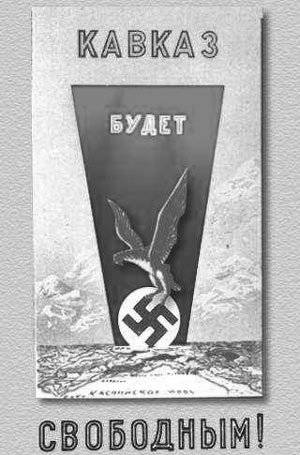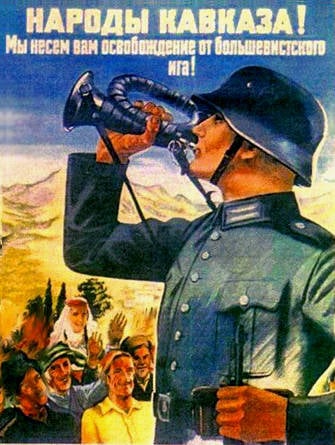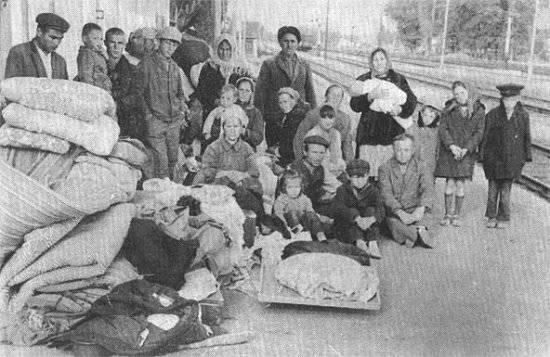Sow Lentils - reap tragedy
Recently, out of the blue, out of nowhere, a hysteria suddenly began about the information that everyone had known for a long time: a certain Commission of the Public Chamber of the Russian Federation on Interethnic Relations and Freedom of Conscience raised a cry about the university history textbook, which had already been published by 3 th time. In this textbook, it is very sparingly written that is much more accurately and detailed in many completely legal books and articles. The cry raised by Svanidze, and the actions that he has already committed, are much more like provocation and inciting hatred of Russian people, which should be punished in the 282 article just as well as inciting hatred of other nations.
As for the stingy, but accurate information from the textbook, one can only say that “you cannot throw out the words from the song”: everyone has long known who organized and financed the coup 1917 of the year, and who after that commanded in Russia, and still commands. And also the hatred of the Chechens for the Rus, who had to be treated by General Yermolov, is no less well known. Yes, and during the Great Patriotic War, many Chechens were very distinguished, deserting thousands and fighting against the Russians. So, it is not a secret at all, but the facts, which are simply stupid to prohibit in our information age. In addition, these facts are quite openly already 10 years lie on the site of the FSB of the Russian Federation. This also confirms that there is no and there can be no crime in covering the facts that have occurred! Here, admire ...
In February 1944 of the year, on the orders of Joseph Stalin, a special operation under the code name “Lentils” was carried out by the organs of the NKVD of the USSR, as a result of which all Chechens were quickly evicted from the Chechen-Ingush Autonomous Republic, and the republic itself was abolished. Not previously known archival documents, only now published figures and facts clarify the arguments used by the Generalissimo to justify their cruel decisions.
CLOUDS
In 1940, law enforcement agencies identified and neutralized the rebel organization of Sheikh Magomet-Hadji Kurbanov that existed in the Chechen-Ingush Republic. In total, 1055 gangsters and their accomplices were arrested, from whom 839 rifles and revolvers with ammunition were seized. 846 deserters who have evaded service in the Red Army are brought to court. In January, 1941, a large-scale armed intervention was localized in the Itum-Kalinsky region under the leadership of Idris Magomadov.
It is no secret that the leaders of the Chechen separatists, who were in an illegal situation, were counting on a quick defeat of the USSR in the war and carried out wide defeatist agitation for desertion from the Red Army, disrupting mobilization, putting together armed groups to fight on the German side.
During the first mobilization from August 29 to September 2, 1941 was to be recruited into the 8000 construction battalions. However, only 2500 arrived at the destination in Rostov-on-Don.
By decision of the State Defense Committee, in the period from December 1941 to January 1942, the 114-I National Division was formed from the indigenous population in the Chechen Autonomous Republic ASSR. According to the end of March 1942, 850 people managed to desert from it.
The second mass mobilization in Chechnya-Ingushetia began on March 17, 1942, and was to end on March 25. The number of people to be mobilized was 14577 people. However, by the deadline, only 4887 was mobilized. In this regard, the mobilization period was extended to April 5. But the number of mobilized increased only to 5543 people. The reason for the disruption of mobilization was the massive evasion of conscripts and desertion on their way to assembly points.
23 March 1942 of the year from the station Mozdok hid mobilized by the Nadterechny RVK deputy of the Supreme Council of the Chechen ASSR Dag Dadaev. Under the influence of his agitation, another 22 man escaped with him.
By the end of March 1942, the total number of deserters and those who evaded mobilization in the republic reached 13500 people.
Under conditions of mass desertion and revitalization of the insurgency on the territory of the Chekhov Autonomous Soviet Socialist Republic, the USSR People's Commissar for Defense in April 1942, signed an order abolishing the recruitment of Chechens and Ingushs in the army.
In January, the regional committee of the All-Union Communist Party (Bolsheviks) and the Council of People's Commissars of the Autonomous Soviet Socialist Republic (SSN) nevertheless appealed to the NPO of the USSR with a proposal to declare an additional set of volunteer soldiers from among the republic’s citizens. The proposal was accepted, and local authorities received permission to call 1943 volunteers. According to the order of NGOs, the call was ordered to be held from January 3000 to February 26 14. However, the approved plan of the next draft was again failed miserably.
So, as of 7 March 1943, of the recognized combatants, 2986 people of "volunteers" were sent to the Red Army. Of these, only 1806 people came to the unit. Only along the way they managed to desert 1075 people. In addition, 797 "volunteers" escaped from the district mobilization points and on their way to Grozny. In total, from 26 in January to 7 in March 1943, 1872 deserted conscripts from the so-called last “voluntary” call to the Chechen Autonomous Republic.
Representatives of district and regional party and Soviet assets appeared among the fugitives: Secretary of the Gudermes RK VKP (b) Arsanukaev, head of the department of the Vedensky RK VKP (b) Magomayev, secretary of the Komsomol committee on military work Martazaliyev, second secretary of the Gudermes RK VLKSM Taymaskhanov, Chairman Galanchuk rayk raych rayzhsky rayk raych rayzhkogo rayk raych rayzhkogo rayko. .
UNDERGROUND
The Chechen political organizations, the National Socialist Party of the Caucasian Brothers and the Chechen-Gore National Socialist Underground Organization, played a leading role in disrupting the mobilization. The first was led by its organizer and ideologist Hasan Israilov. Since the beginning of the war, Israilov went to the illegal position and up to 1944, he led a number of large gangs, while maintaining close ties with German intelligence agencies.
At the head of the other was the brother of the famous A.Sheripov revolutionary in Chechnya - Mayrbek Sheripov. In October, 1941, he also went to the illegal position and made a number of gangsters around him, where deserters flowed in. In August, 1942, Sheripov raised an armed uprising in Chechnya, during which the administrative center of the Sharoyevsky district of Khimoy was defeated.

In November 1942, Mayrbek Sheripov was killed as a result of a conflict with accomplices. Some members of his gangs joined H.Israilov, while others gave in to the authorities.
All in all, the pro-fascist parties formed by Israilov and Sheripov consisted of over 4 000 members, and the total number of their rebel groups reached 15 000 people. In any case, these are the numbers that Israilov reported in March 1942 of the German command.
Patched in the NKO of the USSR with a proposal to announce an additional set of volunteer military personnel from among the inhabitants of the republic. The proposal was accepted, and local authorities received permission to call 3000 volunteers. According to the order of NGOs, the call was ordered to be held from January 26 to February 14 1943. However, the approved plan of the next draft was again failed miserably.
So, as of 7 March 1943, of the recognized combatants, 2986 people of "volunteers" were sent to the Red Army. Of these, only 1806 people came to the unit. Only along the way they managed to desert 1075 people. In addition, 797 "volunteers" escaped from the district mobilization points and on their way to Grozny. In total, from 26 in January to 7 in March 1943, 1872 deserted conscripts from the so-called last “voluntary” call to the Chechen Autonomous Republic.
Representatives of district and regional party and Soviet assets appeared among the fugitives: Secretary of the Gudermes RK VKP (b) Arsanukaev, head of the department of the Vedensky RK VKP (b) Magomayev, secretary of the Komsomol committee on military work Martazaliyev, second secretary of the Gudermes RK VLKSM Taymaskhanov, Chairman Galanchuk rayk raych rayzhsky rayk raych rayzhkogo rayk raych rayzhkogo rayko. .
UNDERGROUND
The Chechen political organizations, the National Socialist Party of the Caucasian Brothers and the Chechen-Gore National Socialist Underground Organization, played a leading role in disrupting the mobilization. The first was led by its organizer and ideologist Hasan Israilov. Since the beginning of the war, Israilov went to the illegal position and up to 1944, he led a number of large gangs, while maintaining close ties with German intelligence agencies.
At the head of the other was the brother of the famous A.Sheripov revolutionary in Chechnya - Mayrbek Sheripov. In October, 1941, he also went to the illegal position and made a number of gangsters around him, where deserters flowed in. In August, 1942, Sheripov raised an armed uprising in Chechnya, during which the administrative center of the Sharoyevsky district of Khimoy was defeated.
In November 1942, Mayrbek Sheripov was killed as a result of a conflict with accomplices. Some members of his gangs joined H.Israilov, while others gave in to the authorities.
All in all, the pro-fascist parties formed by Israilov and Sheripov consisted of over 4 000 members, and the total number of their rebel groups reached 15 000 people. In any case, these are the numbers that Israilov reported in March 1942 of the German command.
SOLDERS OF ABVERA
Having assessed the potential of the insurgent movement in Chechnya, the German intelligence services set out to unite all the gangs.
The 804 th regiment of the special division "Brandenburg-800" aimed at the North Caucasus sector of the Soviet-German front was aimed at solving this task.
In its composition there existed the Sondercommand of Ober-Lieutenant Gerhard Lange, conditionally called "Enterprise Lange" or "Enterprise Shamil". The team was staffed with agents from among former prisoners of war and immigrants of Caucasian origin. Before being sent to the rear of the Red Army to conduct subversive activities, the saboteurs underwent nine-month training. The direct transfer of agents was carried out by the Abvercommand-201.
25 August 1942 from Armavir, a group of chief lieutenant Lange in the number of 30 people, staffed mainly by Chechens, Ingush and Ossetians, was parachuted into the area of the villages of Chishki, Dachu-Borzoy and Duba-Yurt of the Ataginsky district of the Chechen ASSR to commit sabotage and terrorist attacks organized form. A few months later, Osman Guba, arrested by the NKVD bodies, described his impressions of the first days of his stay on Chechen territory during interrogation: "... In the evening, a collective farmer named Ali-Magomet came to the forest and another named Magomet with him. they believed who we were, but when we made an oath on the Koran that we were indeed sent to the rear of the Red Army by the German command, they believed us. They told us that it was dangerous for us to remain here, so they recommended to go to the mountains of Ingushetia, because hiding there b Having spent 3-4 of the day in the forest near the village of Berezhki, we, accompanied by Ali-Mahomet, headed for the mountains to the village of Khai, where Ali-Magomet had good friends. One of his acquaintances was a certain Ilayev Kasum, who took us and we stayed with him for the night. Ilayev introduced us to his son-in-law, Ichaev Soslanbek, who escorted us to the mountains ...
Abwehr agents received sympathy and support not only from simple peasants. Both the chairmen of collective farms and the leaders of the party-Soviet apparatus offered their cooperation with the hunt. “The first person with whom I spoke directly about the deployment of anti-Soviet work on the instructions of the German command,” said Osman Guba during the investigation, “was the chairman of the Dattykh village council, a member of the CPSU (b) Ibrahim Przegurov. I told him that we were dropped by parachute from the German aircraft and that our goal is to assist the German army in freeing the Caucasus from the Bolsheviks and carrying out further struggle for the independence of the Caucasus. Przegurov recommended to establish links with the right people, but to speak openly only when when the Germans take the city of Ordzhonikidze. "
A little later, Dud Ferzauli, chairman of Akshi village council, came to the envoy of the Abwehr. According to Osman, "Ferzauli himself approached me and in every possible way argued that he was not a communist, that he would undertake any of my tasks ... He asked me to take him under my patronage after their terrain was occupied by the Germans."
Osman Guba’s testimony describes an episode when a local resident Musa Keloev joined his group. "I agreed with him that it would be necessary to blow up a bridge on this road. To carry out the explosion, I sent a member of my parachute group Salman Aguev with him. When they returned, they said they blew up an unguarded wooden railway bridge."

UNDER A GERMAN SHOT
Abwehr groups thrown into the territory of Chechnya came into contact with the leaders of the insurgents Kh. Israilov and M. Sheripov, along with a number of other field commanders and set about fulfilling their main task - organizing the uprisings.
Already in October 1942, German paratrooper non-commissioned officer Geert Reckert, who had been abandoned a month earlier in a mountainous part of Chechnya as part of a group of 12 people, together with the leader of one of the gangs, Rasul Sakhabov, provoked a massive armed demonstration by the residents of the villages of the Vedeno district Selmentauzen and Makhkety. Significant forces of the regular units of the Red Army, which at that time defended the North Caucasus, were drawn to localize the uprising. This uprising was being prepared for about a month. According to the testimony of captured German paratroopers, in the area of the village of Makhkety aviation the enemy was dropped 10 large quantities of weapons (over 500 small arms weapons, 10 machine guns and ammunition), which was immediately distributed to the rebels.
Active actions of the armed fighters were noted during this period in the republic everywhere. The following documentary statistics testifies to the scale of banditry in general. During September-October 1942, the NKVD eliminated 41 armed groups totaling over 400 thugs. The 60 thugs voluntarily surrendered and captured. The Nazis had a powerful base of support in the Khasavyurt district of Dagestan, which was populated mainly by Chechen Akkins. For example, in September 1942, residents of Mozhgar village brutally murdered the first secretary of the Khasavyurt district committee of the CPSU (b) Lukin and the whole village went to the mountains.
At the same time, the Abwehr sabotage group of 6 people, under the leadership of Saynutdin Magomedov, was abandoned to the area with the task of organizing uprisings in the areas bordering Chechnya in Dagestan. However, the state security organs of the whole group was detained.
VICTIMS OF CHANGE
In August, the Abwehr 1943 scored three more groups of saboteurs in the Chechen ASSR. As of 1 July 1943, on the territory of the republic, 34 enemy paratroopers, including 4 German, 13 Chechens and Ingush, were listed on the territory of the republic, the rest were other ethnicities of the Caucasus.
In total for the 1942-1943 years in the Chechen-Ingushetia to communicate with the local bandit underground, the Abwehr abandoned paratroopers to 80, of whom more than 50 were traitors to the Homeland from among the former Soviet soldiers.
And yet at the end of 1943 - the beginning of 1944, some peoples of the North Caucasus, including the Chechens, who provided and are able to render the greatest help to the fascists in the future, were deported to the rear.
However, the effectiveness of this action, whose victims were mostly innocent old men, women and children, turned out to be illusory. The main forces of armed gangs, as always, took refuge in the remote mountainous part of Chechnya, from where they continued to make bandit raids for several years.
- Oleg Matveyev, Igor Samarin
- http://www.fsb.ru/fsb/history/author/singl...ublication.html"rel =" nofollow ">http://www.fsb.ru/fsb/history/author/singl...ublication.html

Information